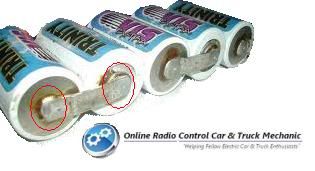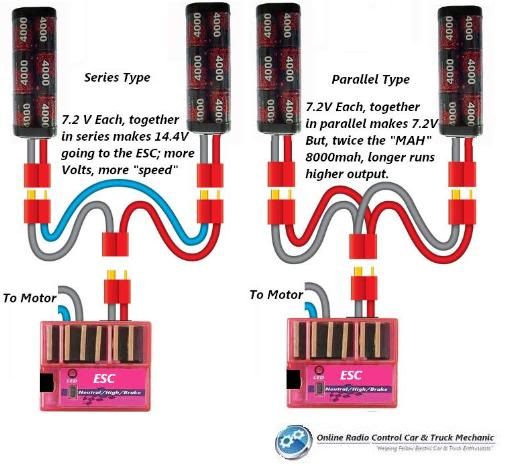
Travis wrote to Online Radio Control Car & Truck Mechanic:
"I had read your blog from a post on Facebook and thought i'd give you an email to see if you had some ideas for me. I've been building my own battery packs latly and running into a problem. I have a Brushless Rustler VXL and Ive been having my battery packs fall part after running and bashing in the park. I have re-soldiered the tabs multiple times and they just don't hold. I've used my soldering iron, and even my friends who told me mine may not be hot enough. I went to the hobby store and they sold me solder with flux in it, and it kinda worked but again.... two out of five packs keep falling apart and I re did them all. What is the deal here? What am I doing wrong??"
Travis, AZ.
This one has plagued many people, and it's often due to a missed step. It seems to me that you have done your homework, used higher heat, and even included the much needed flux into the equation. What you may or may have not done is proper preparation. When you solder a battery tab it's a good idea to lightly sand each matching surface, this includes the battery tab (the side facing the top or bottom of battery) and the top and bottom of the battery itself. Having a rougher surface to bond to will make the solder and flux stick a lot better, rather than to a shiny smooth surface. Along with lightly sanding, use a small amount of cleaning alcohol or electric motor cleaner to cleanly wipe the soldering surfaces. Let dry and apply heat, and then add solder. Some people even "tin" (Tin- pre-applying solder to the tab, and then a small amount to the heads of the battery) before you heat and bond the two together.
Try this, and use some patents when waiting for the solder to dry before flexing the pack around. This will reduce the stress on the hot tabs and more likely hold during a rough landing, or other normal rough driving. Another thing is, are you using a battery jig or some king of battery alignment tool? building packs can be tricky to get all the cells lined up the right way and spaced properly. If you aren't using a battery jig, I strongly recommend it. Makes this process faster and easier.
-ORCCTM Tech.

